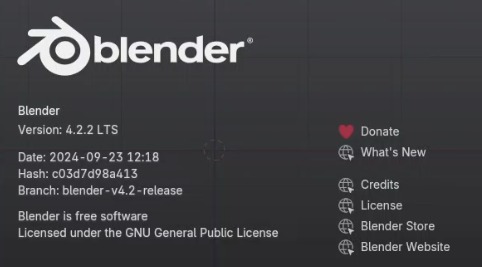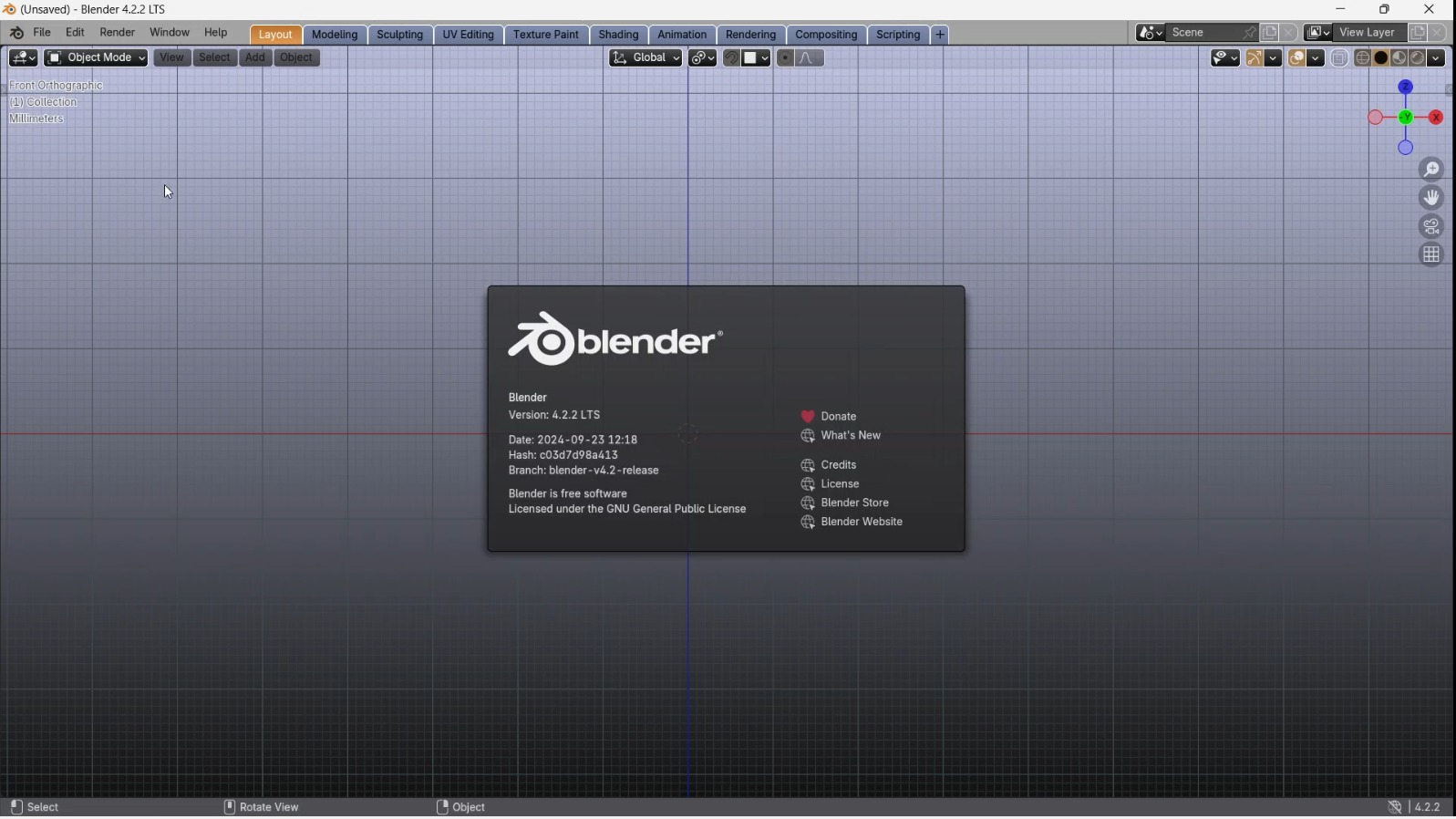Summary
The integration of 3D design software into the dental industry has transformed how dental professionals approach modeling, restoration, and digital workflows. Among the most versatile tools making waves is Blender, a powerful open-source 3D software traditionally used for animation and visual effects. Today, Blender for Dental has emerged as a growing niche, reshaping digital dentistry with customized tools, intuitive workflows, and cost-effective solutions for prosthodontics, orthodontics, implant planning, and more.
Blender for Dental is not just a budget-friendly alternative to expensive CAD software; it is a gateway into the world of open-source dental innovation. With the right tools, plugins, and training, it can serve as a robust platform for nearly every aspect of digital dentistry. From designing crowns and bridges to planning implants and orthodontic treatments, Blender is reshaping how dental professionals think about digital workflows. While challenges exist, especially in learning and integration, the benefits far outweigh them. For those seeking flexibility, control, and innovation in dental design, Blender is not just an option; it’s the future.
Understanding Blender in the Context of Dentistry
Blender is widely recognized in creative fields, but its open-source architecture and vast plugin ecosystem make it adaptable to dental-specific needs. In recent years, developers and dental technicians have created tailored add-ons and workflows within Blender to support dental modeling tasks such as tooth segmentation, arch alignment, occlusion simulation, and guide creation. These adaptations enable users to leverage Blender’s robust 3D tools while incorporating clinical functionality. This has led to its rising popularity among dental technicians, laboratories, and even clinics that aim to reduce software costs while maintaining high precision in digital work.
Why Dental Professionals are Embracing the Blender
One of the most compelling reasons dental professionals turn to Blender is its affordability and open-source nature. Unlike proprietary dental CAD programs that come with heavy licensing fees, Blender is completely free and supported by a global community. This cost-effective aspect allows dental labs and solo practitioners to enter the world of digital dentistry without a huge investment. Moreover, Blender’s frequent updates and plugin support from the community ensure that users can access advanced tools without long-term vendor lock-in. The learning curve might be slightly steeper for newcomers, but the availability of dental-focused tutorials and add-ons has significantly lowered that barrier.
Key Applications of Blender in Dental Practice
1. Designing Crowns, Bridges and Veneers
Dental technicians can design restorations such as crowns, veneers, and bridges directly within Blender. Using scanned intraoral data, the model is imported into Blender, where various tools are used for margin definition, surface sculpting, and occlusal adjustments. Add-ons like Blenderfordental provide streamlined workflows with specific menus and brushes designed for prosthodontics. These capabilities allow technicians to create highly detailed restorations tailored to individual patients, ensuring functional and aesthetic outcomes that align with the clinician’s goals.
2. Orthodontic Planning and Clear Aligners
Blender can be employed in orthodontic treatment planning, especially for designing and simulating clear aligner sequences. With the proper plugins, Blender allows the user to segment teeth, assign movement vectors, and generate stepwise treatment models that can later be 3D printed. These features are particularly useful for in-house production of orthodontic appliances, reducing dependence on third-party aligner companies and enabling more personalized treatment workflows. The process can also integrate with CBCT data, enhancing planning accuracy for complex cases.
3. Surgical Guide Creation
Implantology benefits greatly from the integration of Blender into the digital workflow. Through the use of DICOM-to-STL conversions and proper alignment tools, Blender can be used to design surgical guides for implant placement. These guides assist in transferring virtual implant planning into clinical reality with high accuracy. While more advanced implant planning may still require specific implant planning software, Blender plays a crucial role in post-processing, guide customization, and merging multiple data sources for final production. It is especially valuable when combined with other open-source medical imaging tools.
4. Educational and Visualization Purposes
Blender is also highly effective for creating visual content for patient education, training dental students, and presenting treatment plans. The ability to animate tooth movement, demonstrate surgical procedures, or visualize anatomical models helps bridge the gap between clinical knowledge and patient understanding. Whether used in lectures, patient consultations, or content creation for online dental education, Blender allows for high-quality visuals that are on par with those created using commercial animation software, without the high cost typically associated with them.
Blender For Dental Crack Proof

Blenderfordental Toolkit
Blenderfordental is perhaps the most prominent plugin suite designed to adapt Blender for dental applications. This toolkit includes tools for automatic margin marking, tooth library integration, virtual articulators, and guide creation. The interface is simplified to fit the needs of dental professionals, reducing the learning curve and increasing productivity. Features like Boolean tools for merging and subtracting anatomical parts and libraries of commonly used components such as teeth, implant abutments, and aligner shapes help users quickly generate complex models with high accuracy and consistency.
Dental Shaper and Anatomical Tools
Beyond Blenderfordental, there are also community-driven tools like Dental Shaper and various sculpting brushes that provide advanced anatomical detailing options. These allow dental technicians to fine-tune cusp heights, simulate soft tissue, or prepare surfaces for 3D printing and milling. With the ability to import and manipulate STL and OBJ files, dental professionals can seamlessly interact with intraoral scanner data or digital impressions from other systems, making Blender a central part of an open digital ecosystem.
Benefits of Using Blender in Dental Labs
Blender’s versatility brings numerous advantages to dental labs and clinics. Its high level of customization allows labs to build workflows suited to their specific needs. This results in faster turnaround times and reduced reliance on third-party services. Additionally, Blender’s scripting and automation capabilities enable the development of macros or batch processes that further streamline operations. Labs can produce aligners, night guards, retainers, and restorations at scale with better control over quality and delivery timelines. Furthermore, by adopting Blender, dental labs position themselves at the forefront of digital innovation, appealing to a new generation of tech-savvy dental professionals and clients.
Learning Curve and Training
Despite its many strengths, Blender does present a learning challenge for those unfamiliar with 3D modeling or digital design environments. Dental professionals coming from traditional workflows may need dedicated time and training to become proficient in Blender. While plugins and pre-configured dental toolkits ease the learning curve, the vastness of Blender’s interface can still be overwhelming. To counter this, structured training programs, video tutorials, and hands-on workshops focused specifically on dental use are increasingly becoming available to bridge the knowledge gap.
Data Integration and Interoperability
Another challenge is the integration of Blender with other dental CAD/CAM systems. Most dental clinics and labs rely on scanner software, implant planning platforms, and milling or 3D printing workflows. Ensuring compatibility and data integrity between these systems and Blender requires careful management of file formats, scaling, and alignment. Fortunately, the ability to work with STL, OBJ, PLY, and other common file types makes Blender adaptable, though some manual adjustments may be necessary in certain cases. Still, open-source advocates continue to improve these processes with each update and add-on release.
The Future of Blender in Dentistry
As the dental industry continues to embrace digital transformation, Blender’s role is likely to expand further. Its adaptability, combined with a passionate developer community, means new features, workflows, and integrations are constantly emerging. The trend toward in-house production, custom workflows, and patient-specific care makes Blender an ideal tool for forward-thinking clinics and laboratories. Over time, we can expect even deeper integration with AI-driven diagnosis, automated modeling processes, and cloud-based collaboration tools. Blender could soon become the central hub of digital dentistry in many clinical environments.


